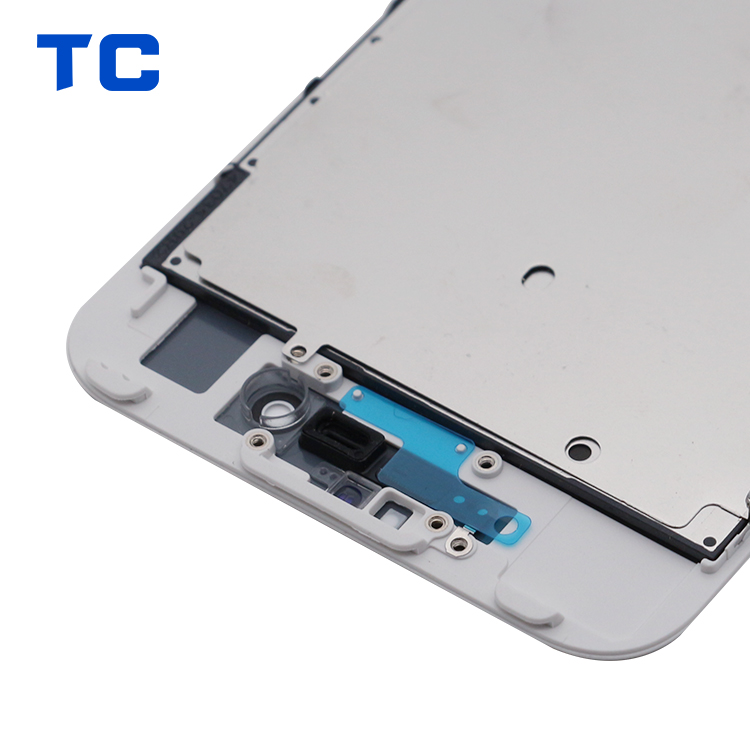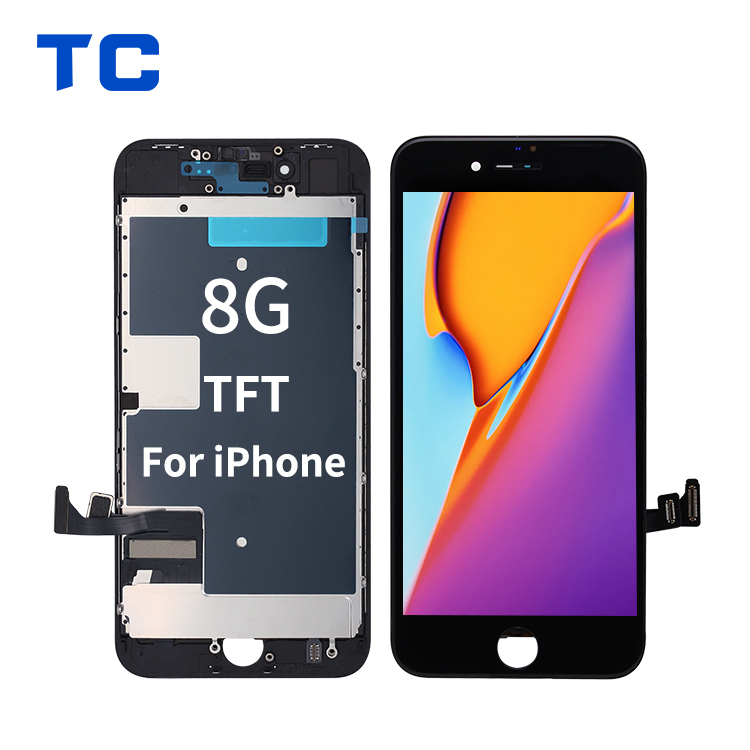Matthias Woggon is CEO & Co-founder of eyefactive GmbH, a pioneer in interactive signage touchscreen solutions.
Years ago, touchscreen technology was fictional, as it could only be seen in movies and books. Significant technological advancements have emerged from the generations that have passed, especially for touchscreens, which are now prevalent in our daily lives. Touchscreen technology can be traced far back in history. iPhone 6 Touch Screen Issue

History: Where It All Started
Touchscreen technology started back in 1965 but failed to become mainstream popular until 2007 when Apple released the first iPhone.
The idea of the touchscreen interface was recorded in October 1965 when an engineer in Malvern, England, specifically at the Royal Radar Establishment, aimed to develop a touchscreen to aid traffic control. His name was Eric Arthur Johnson.
E.A. Johnson wrote and published another more detailed and extensive paper about touchscreens. This paper explains how touchscreen technology operated through pictures of prototypes and diagrams. Moreover, in 1969, E.A. Johnson was granted a patent for his invention.
While capacitive touchscreens were the first to be invented, resistive touchscreens surpassed them in initial years. Dr. G. Samuel Hurst created resistive touchscreens nearly by accident. At the time, Hurst was conducting research at the University of Kentucky, which attempted to patent his design to safeguard this unintentional discovery from replication. Still, its scientific roots made it appear as though its only value was in the lab.
Hurst began an after-hours investigation after returning to the Oak Ridge National Laboratory in 1970. He discovered that a conductive cover sheet was just the thing that the screen needed. This breakthrough paved the way for what we now know as resistive touch technology, which he and his team called elographics. The group finally patented the first curved glass touch interface.
Nimish Mehta created the first human-controlled multitouch device at the University of Toronto in 1982. Myron Krueger, an American computer artist who built an optical system that could capture hand gestures, pioneered gesture interaction immediately after. Touchscreens became extensively commercialized in the early 1980s. When Bell Labs' Bob Boie created the first transparent multitouch screen interface, it significantly advanced multitouch technology. Moreover, this allowed users to alter visuals with their fingertips.
Apple was the first company to launch a touchscreen smartphone in 2007 successfully. Because the iPhone has a compact, user-friendly form and minimal multitouch functionality, users cannot hold the shift key with one finger while typing a capital letter with another in keyboard mode. However, it enables the pinching capability for zooming in and out of maps and pictures, invented by researcher Krueger. The first iPhone helped touchscreen technologies become popular worldwide.
From iPhone To McDonald's (B2C To B2B)
Touchscreen technology has adapted to a broader range of devices and applications since the original iPhone in 2007. Although initially used primarily for personal use (B2C), a different use case grew around B2B applications.
Annually, the touchscreen panel market evolves. It continues producing larger touchscreen panels at lower costs, making touchscreen technologies more viable for small businesses and large roll-outs.
McDonald's self-order systems have been the most well-known and biggest roll-out of its sort, with installations beginning in all countries in 2018. It uses the same type of technology as consumer touchscreens except on a much larger scale. Installing self-service kiosks has been extremely successful, showing a 30% increase in revenue in Ireland and the UK. This is largely due to people customizing their orders more on a kiosk resulting in higher average order values.
From Single Touch To Multitouch To Multi-User
The first touchscreen technology, single touch, merely emulates the mouse interface with a finger.
Currently, we use multitouch screens. Even if the type of gestures enabled by current smartphones and tablets are usually restricted to simple interactions, the first iPhone made multitouch technology widely accepted. Tap, slide and drag gestures are all possible with one finger. Pinch and rotate gestures use two fingers. On larger touchscreens, multitouch can employ two fingers or the entire hand.
Future developments in touchscreen technology are showing multi-user technology. This technology uses large-scale touchscreens and enables multiple people to interact with the display at the same time. By enabling multi-person interactions, these new large-scale touchscreens offer opportunities for collaborative tasks.
It has not been long since Apple's first iPhone introduced touchscreen software technology to the public. Touchscreen software technology has progressed since then, quickly gaining traction in the B2B sector. McDonald's was the first B2B company to introduce larger touchscreens in 2018.
Going forward, expect touchscreen technology to further permeate into a wide variety of businesses. For example, restaurants can start utilizing touchscreen tables allowing customers to order as soon as they are ready and provide entertainment while waiting. More retail stores will also start incorporating touchscreen kiosks similar to the way McDonald’s uses them. But they are not only limited to the food service sector, as businesses can use touchscreen kiosks as part of their omnichannel strategy.
As for technology, touchscreens are starting to expand in capabilities with pressure sensitivity. This can unlock a new method of interaction. Other touchscreen manufacturers are experimenting with semi-transparent touchscreens, which can be used for augmented reality (AR) solutions.
More will come, transforming how we engage with computers in public areas, just as smartphone touchscreens did in the B2C sector.
Forbes Technology Council is an invitation-only community for world-class CIOs, CTOs and technology executives. Do I qualify?
I am the editor of ForbesLife (né Forbes FYI), a luxury lifestyle publication covering fashion, travel, cars, watches, and other indulgences. (Which means that I can tie a bow tie and pronounce \"Laphroaig.\") I have been an editor at Esquire, Vogue, and some other magazines (Mirabella and Premiere) that have gone on to that big newsstand in the sky. I've also been a book editor at ESPN and spent the last few years working digitally for The Daily Beast and Byliner. Follow me on Twitter: @Mister_Solomon
I am the editor of ForbesLife (né Forbes FYI), a luxury lifestyle publication covering fashion, travel, cars, watches, and other indulgences. (Which means that I can tie a bow tie and pronounce \"Laphroaig.\") I have been an editor at Esquire, Vogue, and some other magazines (Mirabella and Premiere) that have gone on to that big newsstand in the sky. I've also been a book editor at ESPN and spent the last few years working digitally for The Daily Beast and Byliner. Follow me on Twitter: @Mister_Solomon
Denis Mandich, CTO of Qrypt, a quantum cybersecurity company, founding member of the Quantum Economic Development Consortium and CQT. Read Denis Mandich's full executive profile here.
Monish Darda, cofounder & CTO, Icertis. Read Monish Darda's full executive profile here.

iPhone 11 Pro Incell Lcd Assembly Replacement Rick Watkin is President & CEO of KUBRA, a leading provider of customer experience management solutions for utilities and other industries. Read Rick Watkin's full executive profile here.